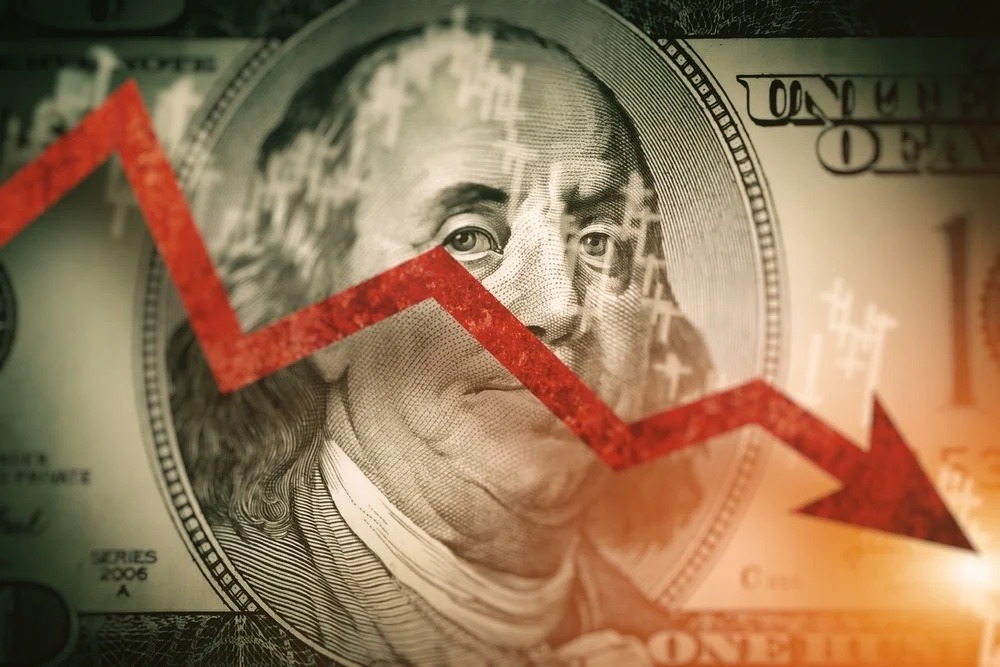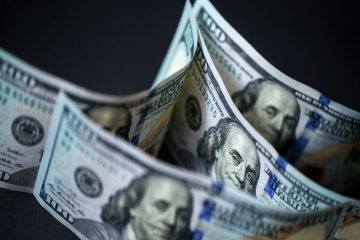The falling US dollar shouts tariffs are Brexit for America

The declining value of the US dollar indicates that tariffs represent a pivotal moment for America, akin to Brexit. Recently, the prevailing sentiment on Wall Street suggested that President Trump’s tariff strategy might significantly bolster the dollar’s strength. The concept was founded on several rationales. One notion was that the US economy stood as the world’s strongest merely weeks prior, exhibiting minimal indications of deceleration. Robust economies are typically associated with resilient currencies, largely due to the presence of elevated interest rates on risk-free returns.
The prevailing assumption was that the implementation of tariffs would lead to a depreciation of the currencies of America’s trading partners, acting as a mechanism to mitigate some of the adverse effects of tariffs on their exports from the viewpoint of US consumers. Consider a scenario where the United States implements a 25% tariff on Vietnam, leading to a 10% depreciation of the dong as a direct consequence. In this scenario, when companies such as Nike import shoes from Vietnam to the United States, fluctuations in currency values indicate that the total cost of the imported goods has not increased by the entire 25%. Given that currency prices are inherently comparative, a depreciation of the euro, yen, or dong invariably results in an appreciation of the dollar.
Analyzing the current market conditions, it appears that the prevailing notions may be misguided, particularly regarding the response to Trump’s substantial tariff declaration made yesterday. The US dollar index, which is significantly influenced by affluent trading partners such as the euro, yen, and British pound, is currently experiencing its most substantial decline in a minimum of two years.
The dollar has experienced a notable depreciation relative to the currencies of various nations, including Canada, Mexico, and South Korea. Given America’s position as a primary trading partner, one might anticipate that the imposition of tariffs would lead to a depreciation of the Canadian dollar, peso, or won. In a notable development during overnight trading, the dollar experienced a significant decline against the off-shore traded Chinese Yuan, which has emerged as a prominent focal point. This movement prompted intervention from Chinese regulators, who appeared to realign the tightly controlled currency with established government policy.
Reflecting a significant shift in market sentiment, Deutsche Bank’s Head of Currency Strategy, George Saravelos, began the year advocating for a strong dollar as his primary theme, citing the influence of a “tariff risk premium” on the greenback’s value. His perspectives, naturally, transformed over time as the policies of Trump 2.0 emerged and the market’s response to them crystallized. Saravelos is cautioning that a potential “dollar confidence crisis” could be on the horizon. “The protective attributes of the dollar are diminishing,” he noted in a memorandum on Thursday. “Furthermore, recent developments since the beginning of the year raise concerns regarding a potential erosion of confidence in the US economic outlook and the medium-term attractiveness of dollar investments.”
What are the current developments? One interpretation of the unexpected decline of the dollar today is that the magnitude of the tariffs announced by Trump yesterday — potentially elevating US trade barriers to heights not observed since 1909 — may pose a greater shock to the US economy than to our trading partners. Consider this a domestic parallel to Brexit: a voluntary supply disruption that ultimately diminishes national wealth. If the exchange rate fails to mitigate the impact of tariffs, it implies that US consumers and Corporate America will have to absorb the majority of this adjustment. The depreciation of the dollar indicates a decline in US purchasing power, concurrently with tariffs increasing the expenses associated with importing goods. This presents a detrimental scenario for consumers, significantly deteriorating the forecast for spending compared to just one day prior.
The swiftly intensifying threat of recession in the United States is prompting a quick reevaluation of the comparative economic strength of the US against other nations, alongside a convergence in short-term interest rates. In other terms, a targeted trade war initiated by the US against select strategic nations would have resulted in adverse consequences for those nations. However, implementing extensive tariffs globally in a simultaneous manner is predominantly detrimental to the United States itself.









